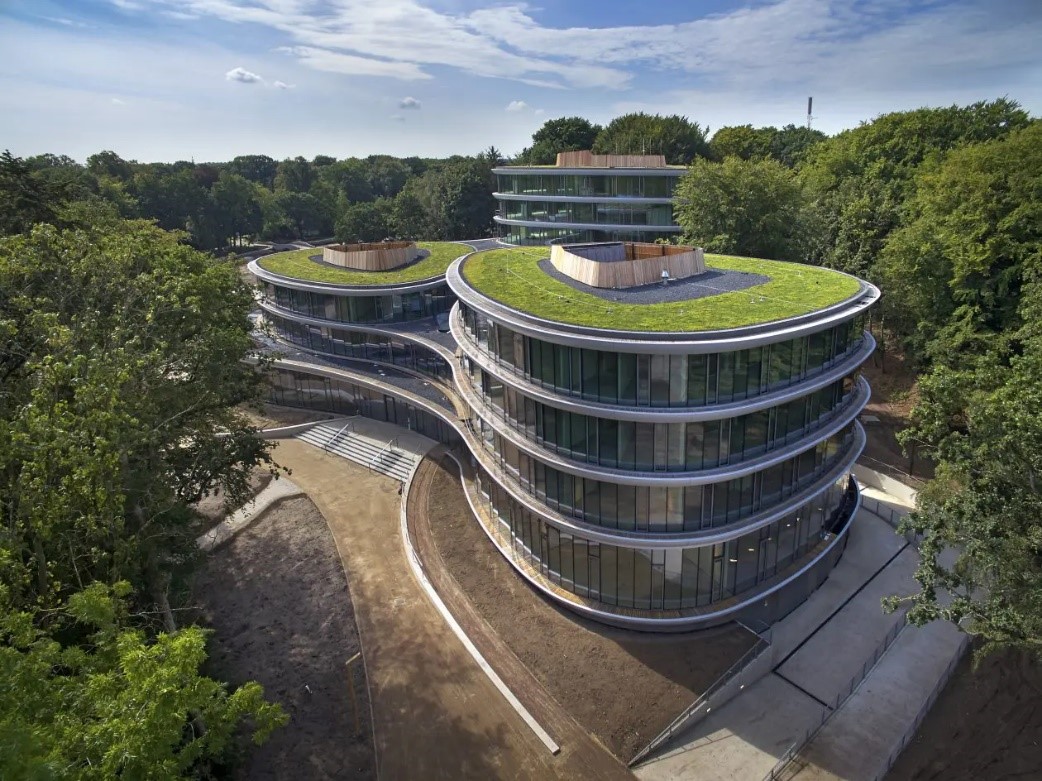The World Resources Information Council (WRI) and the International Energy Agency (IEA) estimate that construction is responsible for about 36% of global energy consumption. It consumes about 50% of raw material resources and generates nearly 40% of greenhouse gas emissions. It is therefore becoming crucial to change the way we create and operate buildings.
Currently, the linear system reigns supreme. We create goods from extracted raw materials, sell them and use them. Then, after the exploitation or renovation is completed, a significant portion of the construction materials simply wind up in a landfill. This approach generates a very negative impact on the environment. According to experts (Global Footprint Network), humanity consumes up to 1.8 times more resources than the planet’s regenerative capacity allows.
What can we do?
The rescue is the Closed- Loop Economy, also known as the circular economy – a solution that will minimize the use of materials, reduce waste and pollution, extend the life cycle of products and introduce ways to reuse them.
However, in order to use the full potential of recycled materials, we must first face a number of issues. These include building adequate public awareness, creating the necessary legislation and also procedures to maintain and control the quality of these materials, ensuring continuous supply and developing a sales market.
Characteristics of circular buildings
Circular buildings are facilities created primarily from recycled materials, providing energy and water efficiency, and having an impact on biodiversity conservation. They are also facilities built to reuse the materials used.
The large-scale establishment of such facilities would reduce the overexploitation of raw materials, reduce emissions of pollutants and greenhouse gases from the production of materials, and reduce the amount of waste generated.
A characteristic feature of buildings of this type is also the ease of adaptation and conversion to new functions, if the original purpose is changed.
It is also important to be able to dismantle the building structure efficiently and to be able to reuse the materials used in construction. It is important that circularity is taken into account already at the stage of building design. In this phase, the entire life cycle of the materials and items planned for use must be analyzed.
Circular buildings and sustainable development
Building according to the circular economy concept would bring additional value to the Sustainable Development Goals, particularly Goal 11 – Sustainable Cities and Communities and Goal 13 – Climate Action.
Circular buildings would help combat challenges such as climate change, resource scarcity, excessive waste, biodiversity loss and pollution. All by transforming harmful ways of obtaining, processing and using natural resources in favor of maximizing the use of those already obtained.
Implementing circular design principles on a larger scale would definitely contribute to the well-being of both people and the environment.

Circular building of Triodos Bank
Source: https://www.architectuur.nl/interieur/interieur-triodos-bank/
What can Go4Energy do for you?
We offer our customers:
- Development of an ESG report for the organization,
- Development of an ESG report for the building,
- Analysis and reduction of the building’s carbon footprint,
- Life Cycle Assesment of the building
We also support the implementation of other ESG and sustainability measures:
- Analysis of compliance with the EU Taxonomy for new buildings,
- Analysis of compliance with the EU Taxonomy for building renovation,
- Conducting BREEAM, WELL, LEED certifications,
- Energy efficiency audits,
- Carbon footprint calculations of the organization,
- Preparation of a decarbonization strategy,
- Development of a strategy for achieving climate neutrality for the company,
- Development of a sustainability strategy tailored to a specific client,
We invite You to contact us, our experts will answer any questions and help match the best solutions for Your company.
Author: Michalina Hertmanowska
